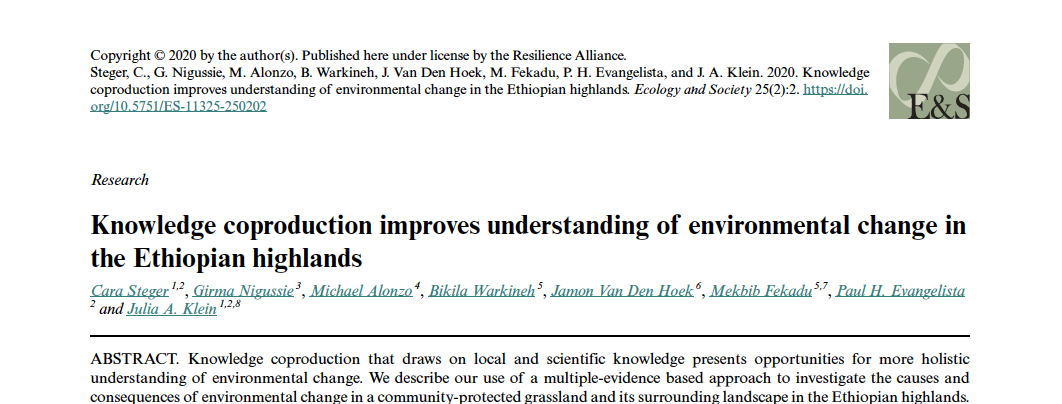Knowledge coproduction that draws on local and scientific knowledge presents opportunities for more holistic understanding of environmental change. We describe our use of a multiple-evidence based approach to investigate the causes and consequences of environmental change in a community-protected grassland and its surrounding landscape in the Ethiopian highlands. We explore the interaction of biophysical change (precipitation and vegetation) and social change (political and management institutions), and discuss potential impacts for ecosystem service provisioning. We quantified current distributions of locally defined land use/cover classes using a supervised classification, with an overall accuracy of 87.1%. Local community members then described and ranked the ecosystem services associated with each land class according to their perceived importance for society. Vegetation and precipitation changes were assessed using satellite time series beginning in the early 1980s, while local narratives describe changes back to the 1970s. The knowledge coproduction process brought together ethnographic and remote sensing approaches, revealing both complementary and contradictory findings across knowledge systems. Results with high agreement across knowledge systems clarify and reinforce understanding of certain threats and changes to the area, such as the rapidly declining native forests, the disappearing belg rainy season (p = 0.01), and the impact of insecure land tenure on natural resource extraction. Compelling areas of disagreement point to topics in need of further investigation, including increased attention to the spatial and temporal variability of change across a seemingly homogeneous cultural landscape, and the process of shrub encroachment into the protected grassland.
You can read the full paper here.
Cara Steger 1,2, Girma Nigussie 3, Michael Alonzo 4, Bikila Warkineh 5, Jamon Van Den Hoek 6, Mekbib Fekadu 5,7, Paul H. Evangelista and Julia A. Klein 1,2,8

